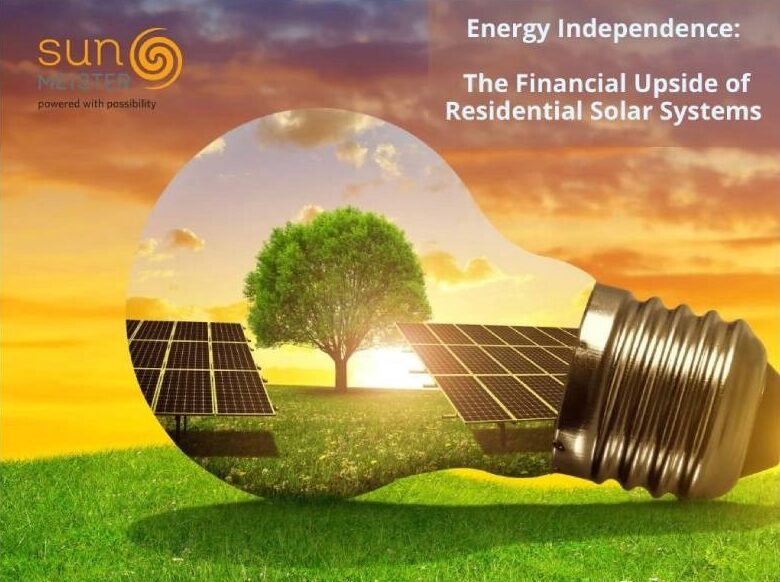India’s energy demand is expected to double by 2040, driven by rapid urbanisation, industrial expansion, and rising per-capita consumption (IEA India Energy Outlook). For homeowners, this translates into mounting electricity costs and growing dependence on an ageing, often unreliable grid. In this landscape, residential solar systems are emerging as powerful tools—not just for savings, but for long-term energy security and climate-conscious living.
What is Energy Independence?
Energy independence refers to producing and managing electricity on-site—through rooftop solar systems and storage solutions—minimising reliance on the grid or fossil-fuel generators.
For Indian households, especially in regions facing frequent power cuts, this means greater control over energy access and cost.
Modern hybrid solar systems equipped with battery storage offer:
Protection from outages
Insulation from electricity tariff hikes
Freedom from diesel generator dependency
Importantly, this shift also advances India’s climate goals by reducing residential carbon emissions and cutting reliance on coal-based power.
Why Now? The Financial Case for Going Solar in India
Rising Electricity Costs
The average residential power tariff in Indian metro cities ranges from ₹6 to ₹10 per unit (India Energy Dashboard). With tariffs rising annually, solar offers price stability. A 3kW rooftop system can generate 4,000–4,500 units per year—equating to annual savings of ₹25,000–₹35,000, depending on usage.
Short Payback Periods
With falling solar panel prices and improving inverter efficiency, systems typically pay for themselves within 4–6 years, yet last 25+ years. According to the Ministry of New and Renewable Energy (MNRE), residential rooftop solar costs range between ₹60,000–₹75,000 per kW before subsidies.
Government Incentives
Under the Rooftop Solar Programme Phase-II, households can avail:
40% subsidy for systems up to 3kW
20% subsidy for systems between 3–10kW
State-level DISCOMs also offer additional rebates and support.
Net Metering Advantage
Policies like TANGEDCO’s net metering scheme allow excess solar power to be exported to the grid, earning credits that offset future consumption.
Climate Change and Energy Independence
India is the world’s third-largest emitter of greenhouse gases. Fossil-fuel-based electricity—especially coal—remains a major contributor to this footprint. As climate events become more severe and frequent, reducing carbon emissions is no longer optional.
Residential solar systems directly:
Cut GHG emissions from homes
Lower peak electricity demand, reducing coal use during high-load hours
Replace diesel gensets, which emit toxic particulates and contribute to urban air pollution
Energy independence isn’t just about saving money—it’s about building climate resilience.
Every solar-powered home becomes a micro-unit of change in India’s broader energy transition.
Beyond Savings: Backup Power and Resilience
Grid Reliability Issues
In some Indian states, households face over 1,000 hours of outages per year (PRS Legislative Research). Battery-backed solar systems ensure seamless power during such interruptions.
Ditching the Diesel
Diesel prices hover above ₹90/litre in many regions (Petrol Price Tracker). Running generators is not only expensive but also noisy and environmentally damaging. Solar + battery systems offer a cleaner, quieter, and cheaper backup solution.
Why Choose Sunmeister?
At Sunmeister, we combine deep technical expertise with globally trusted hardware to deliver smart, scalable solar systems. Our systems are built on the Victron Energy product line, known worldwide for quality, off-grid readiness, and intelligent control.
Key Victron components include:
Victron MPPT Charge Controllers – Maximise energy harvest, even in partial shade
Victron MultiPlus & Quattro Inverter/Chargers – Enable automatic switching between solar, grid, and battery
Victron Lithium Battery Systems – Deliver high efficiency, long lifespan, and fast recharge
Cerbo GX & GX Touch Displays – Offer real-time energy insights via the Victron VRM portal
Whether your goal is reduced reliance or full independence, Sunmeister’s hybrid systems provide resilient, future-ready energy.
The Bigger Picture: Energy Independence = Climate Security
India’s net-zero emissions target by 2070 isn’t just a national goal—it’s a shared responsibility. Residential solar adoption plays a pivotal role in:
Reducing grid stress during peak hours
Minimising coal consumption and urban air pollution
Decentralising energy generation for national resilience
By going solar, homeowners become part of the climate solution. Energy independence isn’t just a financial decision—it’s a climate action with measurable, long-term benefits for both individuals and the planet.

